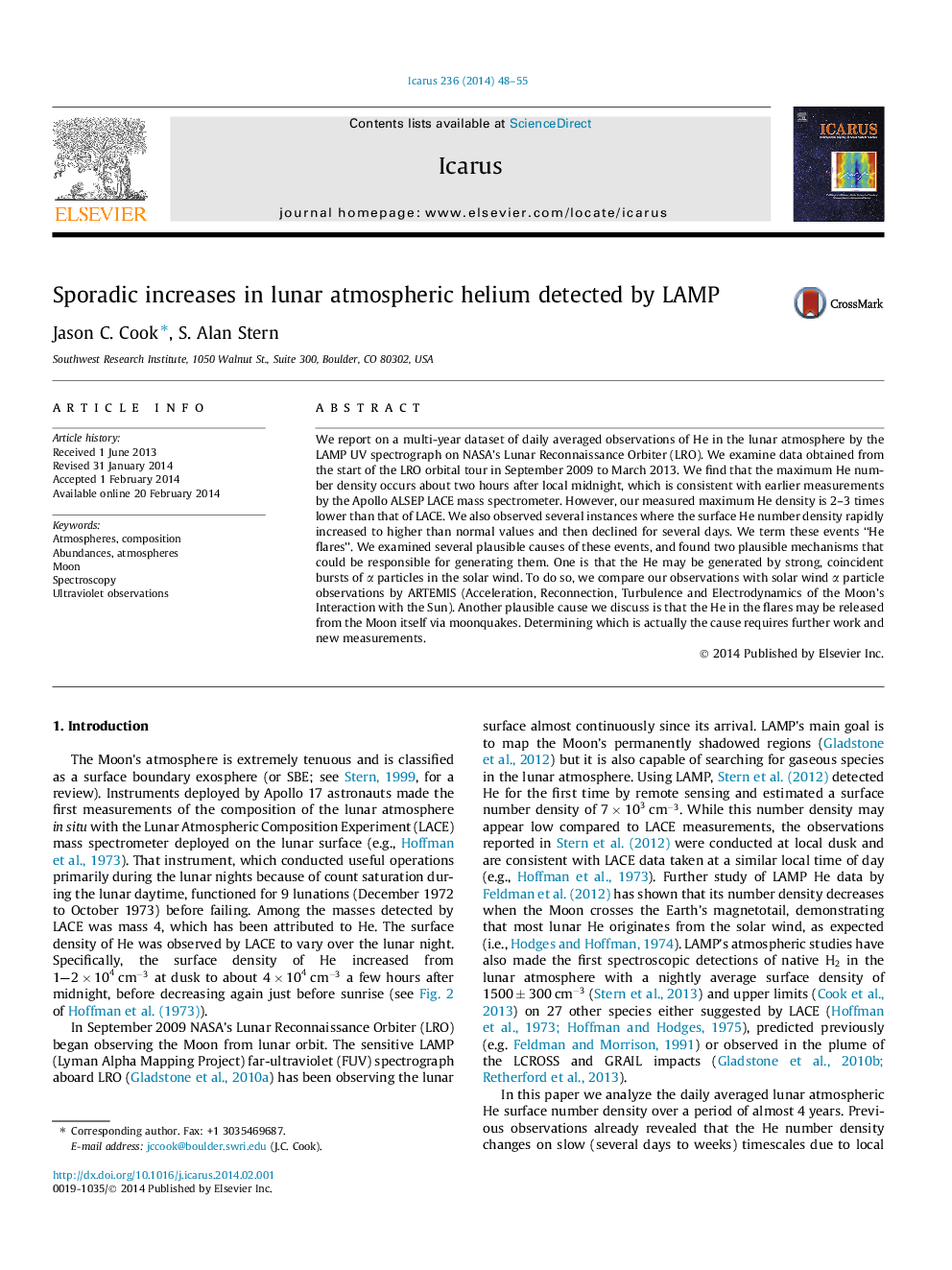| Article ID | Journal | Published Year | Pages | File Type |
|---|---|---|---|---|
| 1773166 | Icarus | 2014 | 8 Pages |
Abstract
We report on a multi-year dataset of daily averaged observations of He in the lunar atmosphere by the LAMP UV spectrograph on NASA's Lunar Reconnaissance Orbiter (LRO). We examine data obtained from the start of the LRO orbital tour in September 2009 to March 2013. We find that the maximum He number density occurs about two hours after local midnight, which is consistent with earlier measurements by the Apollo ALSEP LACE mass spectrometer. However, our measured maximum He density is 2-3 times lower than that of LACE. We also observed several instances where the surface He number density rapidly increased to higher than normal values and then declined for several days. We term these events “He flares”. We examined several plausible causes of these events, and found two plausible mechanisms that could be responsible for generating them. One is that the He may be generated by strong, coincident bursts of α particles in the solar wind. To do so, we compare our observations with solar wind α particle observations by ARTEMIS (Acceleration, Reconnection, Turbulence and Electrodynamics of the Moon's Interaction with the Sun). Another plausible cause we discuss is that the He in the flares may be released from the Moon itself via moonquakes. Determining which is actually the cause requires further work and new measurements.
Related Topics
Physical Sciences and Engineering
Earth and Planetary Sciences
Space and Planetary Science
Authors
Jason C. Cook, S. Alan Stern,
